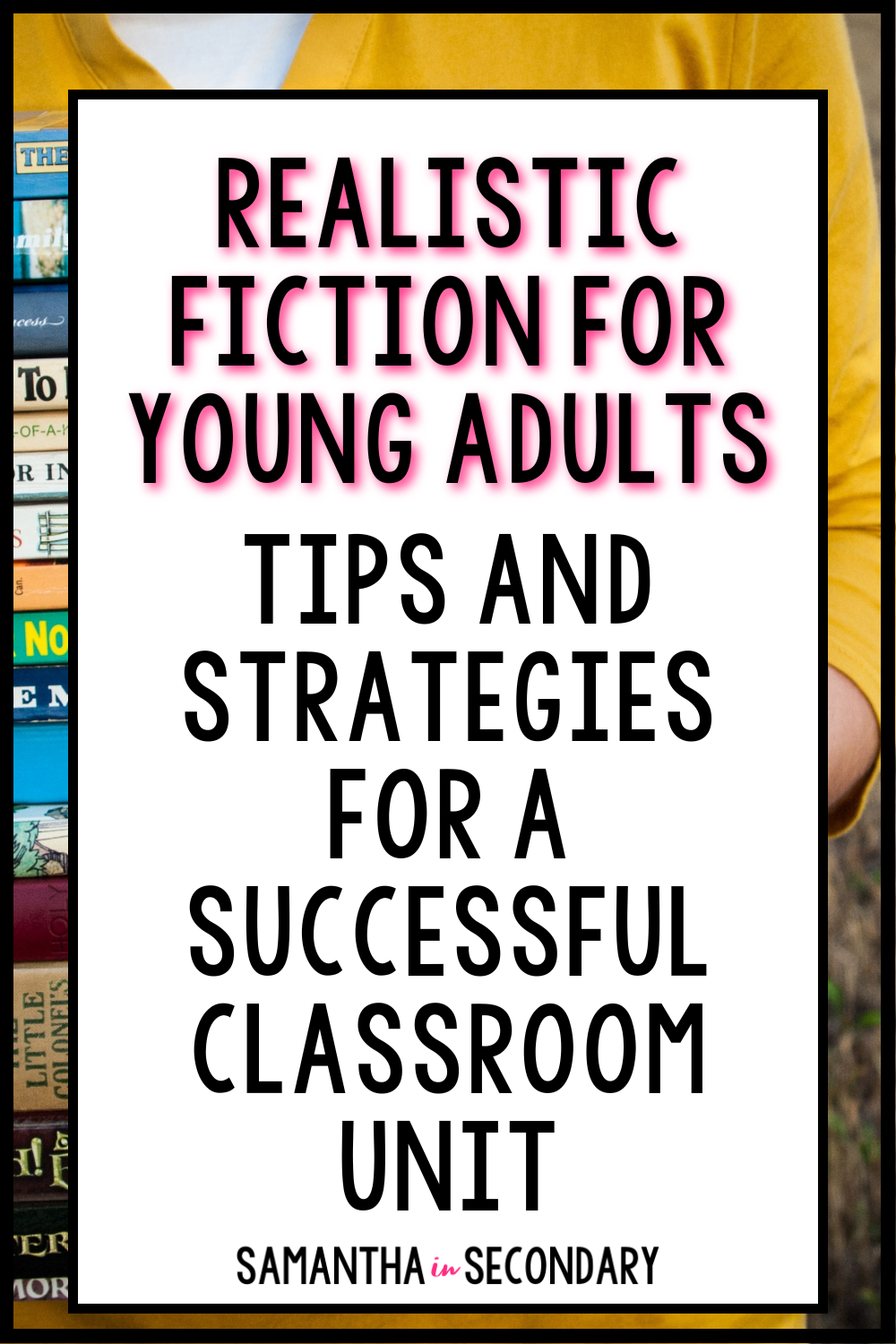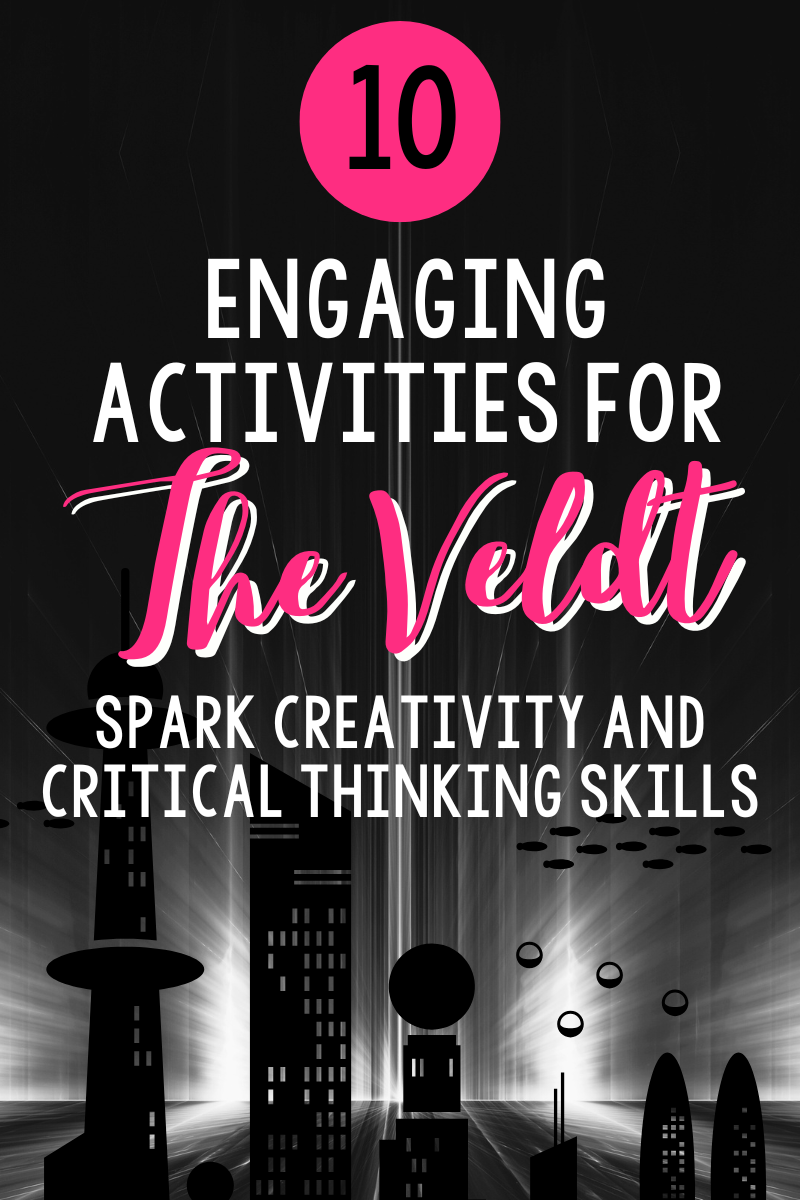Using a character puzzle project is an entertaining and yet rigorous activity for understanding character analysis. It is a group-effort analysis that challenges students to analyze the relationships between characters, thus better understanding the art of storytelling.
This post will cover what you need to know for implementing a character puzzle analysis within your secondary ELA classroom. Read on for info, tips, and links to helpful resources.
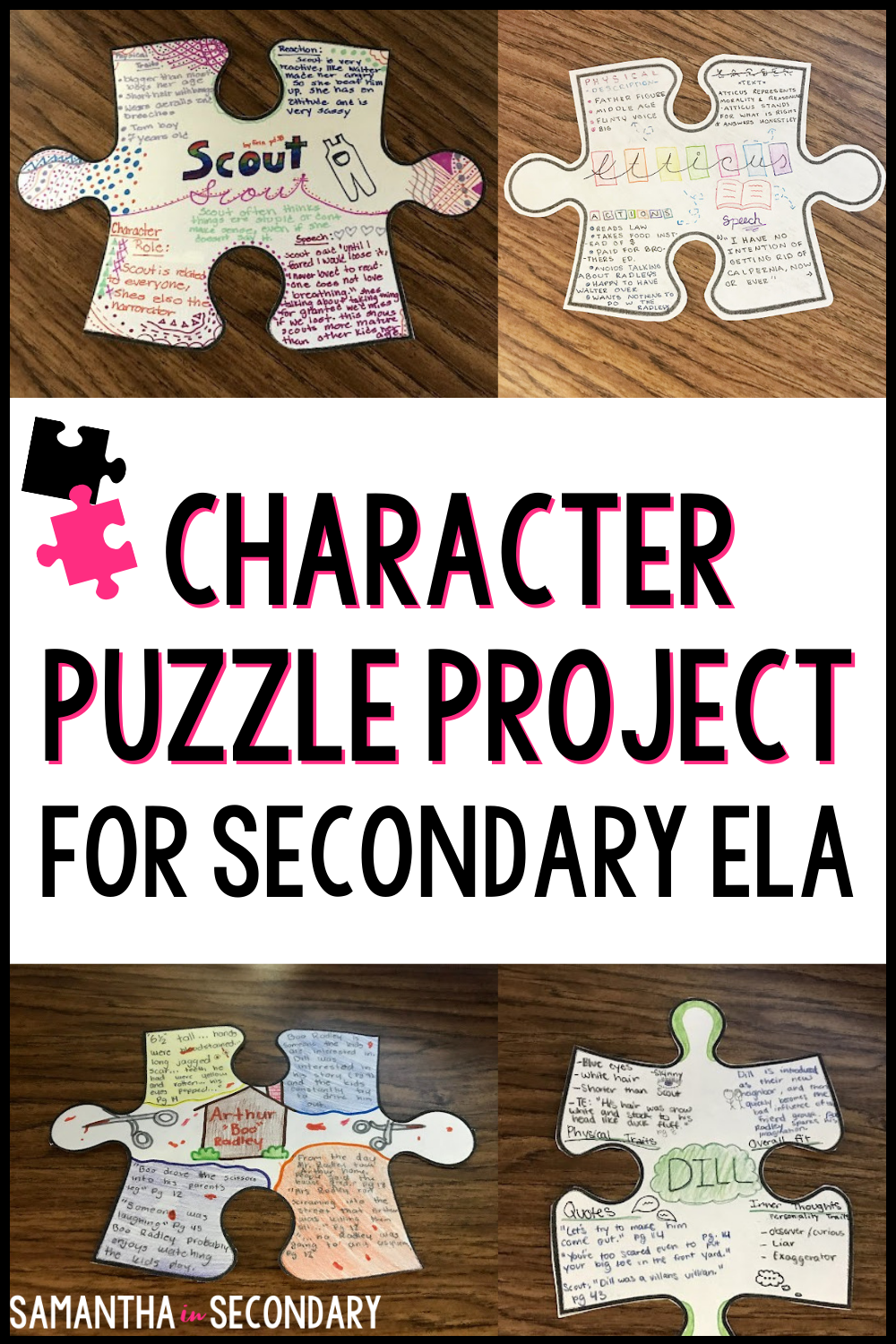
What’s a Character Puzzle Project?
This puzzle project transforms character exploration into an engaging journey that encourages students to delve deep into the narrative, unraveling the intricate web of character relationship and traits over the course of the text. By incorporating puzzle pieces, we can bring character standards to life in an innovative and interactive way.
Why Use a Character Puzzle?
Students participating in this project will analyze how characters develop over a course of a text, examine how characters interact with each other, and determine important details about an author’s choices regarding characters. The intent is to ignite critical thinking and lively discussions about characters, making learning a meaningful experience. These types of critical thinking activities help students develop their analytical skills which is important for both academics and real-world settings.
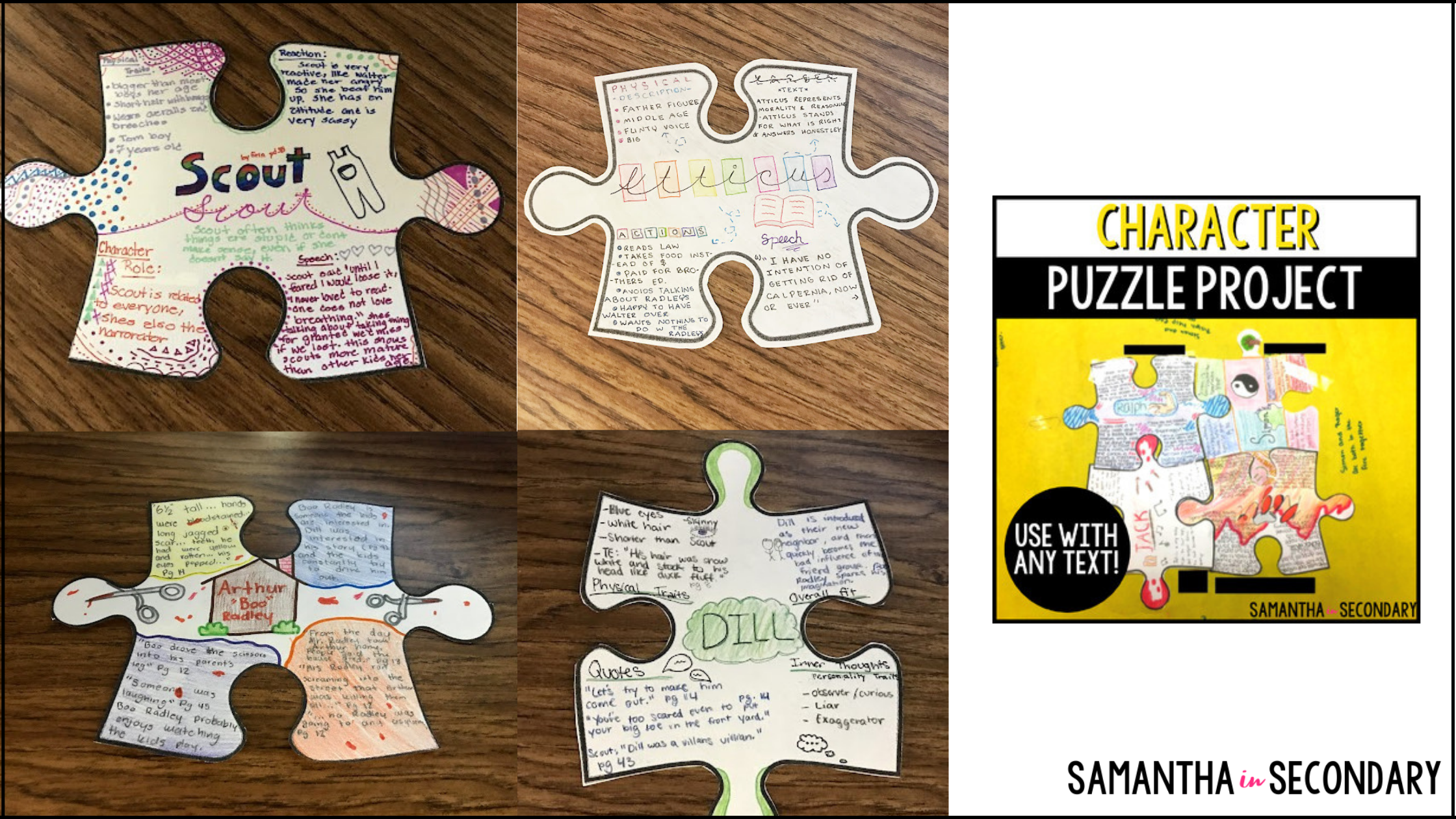
How to Use a Character Puzzle
The puzzle project is already an innovative group-centered activity. You can adjust in whatever way that will fit your class size and culture, but here are some suggested strategies.
First you will need to decide how you want your students to create the puzzle pieces. To make them all fit together for the overall project I highly recommend using templates. Distribute a Character Puzzle Piece to each student. You can also create templates to create outside chalk pieces to fit together, or assign digital Google Slides to students in lieu of printing puzzle pieces.
Group students and assign each group a character from the novel. You will jigsaw these groups later to create the final puzzle groups. Have students complete the Character Brainstorming Sheet. This is, of course, optional. However, I have found that the quality of work I receive from those who complete it tends to be much more detailed. If you’re completing a digital version of this assignment, you probably won’t group and jigsaw, so students will work on their own individual slides before coming together to create a final presentation with each portion. Once students have completed brainstorming, pass out the templates and give students time to complete their puzzle pieces.
Assign students new numbers within their character groups and have them move into new groups. Each person in these new groups should have a different character. Provide them with a large sheet of butcher paper or poster boards and have them build their character puzzles based on who they believe should be placed where. As an extension idea, have them write on their papers why they placed each character where they did. If your students are completing a digital version, students should rearrange their puzzle pieces in the order they believe is appropriate for their present mode.
Character puzzles will look different depending on how many characters were assigned and how many students are in each group. It would be an excellent idea to have a gallery walk with the whole class, or simply participate in a class discussion about the different arrangements groups chose and the explanations for each.
Done-For-You Character Puzzle Project Resource
If you’d like to use my specific project complete with templates, instructions, rubric, and examples, find it here in my shop! It’s ready to print and use right now.
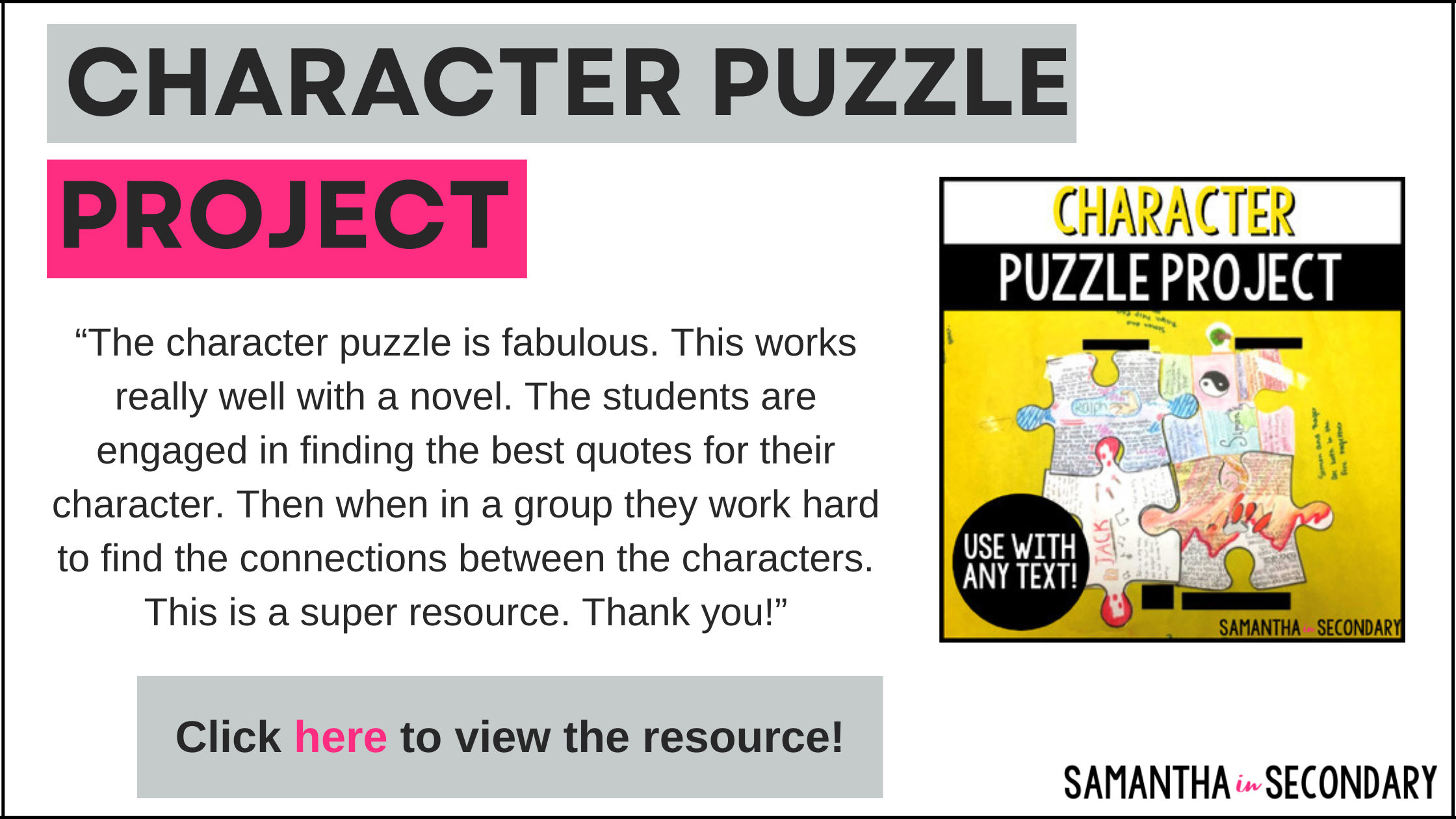
Utilizing a Character Puzzle Project in secondary English Language Arts classes serves multiple purposes. Students analyze how characters develop over the course of the novel. They also must examine how the characters interact with each other. This project is made to be a collaborative activity, so it encourages developing student interactions and groupwork. Even though they work on critical thinking skills and are developing their research abilities, students do so in an engaging way.
If you’d like to see more tips on teaching character in your secondary ELA classroom, read some more of my blog here.
I’d love to know what you think of the puzzle project with students and any other engaging suggestions you have when teaching character analysis. Sound off in the comments below or follow me on Instagram to join the conversation.
Happy teaching!








